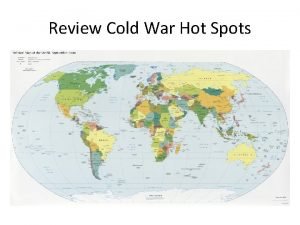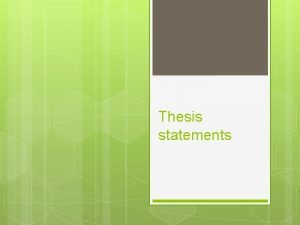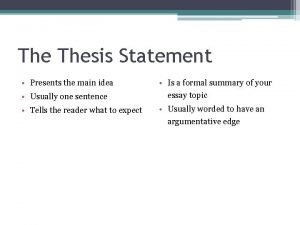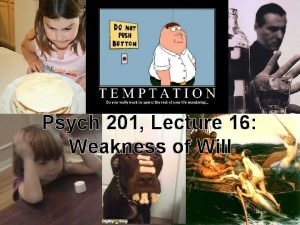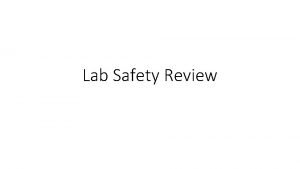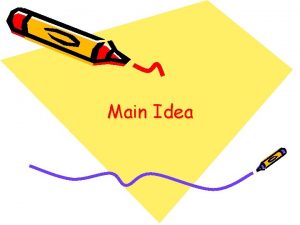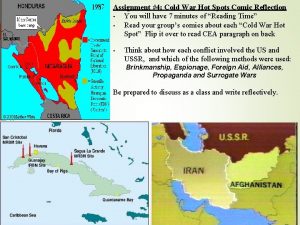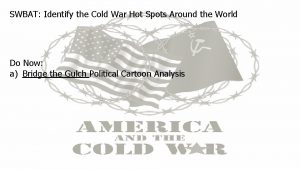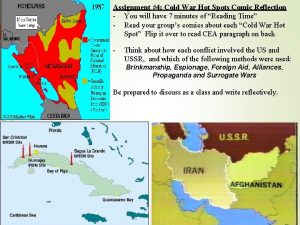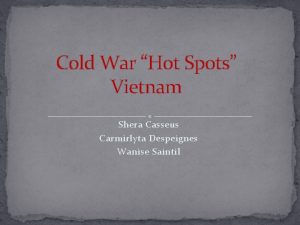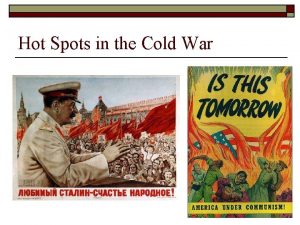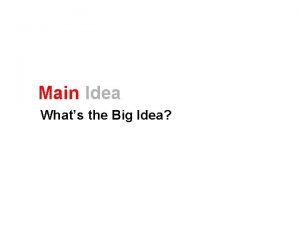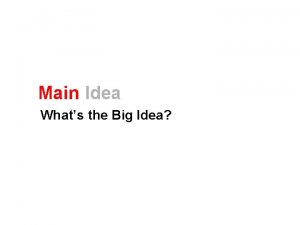Cold War Hot Spots Thesis Main Idea The















- Slides: 15

Cold War Hot Spots Thesis (Main Idea): The superpowers supported opposing sides in Latin American and Middle Eastern conflicts.

Cold War Hot Spots: People, Places, Events & Ideas Third World: Developing nations, often newly independent, who were not aligned with either superpower.

Cold War Hot Spots: People, Places, Events & Ideas Non-aligned nations: Third World countries who wished to avoid a role in the Cold War and maintain their neutrality.

Cold War Hot Spots: People, Places, Events & Ideas Fidel Castro: Young Cuban lawyer who led a popular revolution in January 1959. At first he brought social and economic reforms, but he became a harsh dictator.

Cold War Hot Spots: People, Places, Events & Ideas Anastasio Somoza: Nicaraguan dictator supported by the United States from 1933 to 1979.

Cold War Hot Spots: People, Places, Events & Ideas Daniel Ortega: Nicaraguan leader of the Communist Sandinistas. Supported by both the U. S. and the USSR, he overthrew Somoza.

Cold War Hot Spots: People, Places, Events & Ideas Ayatollah Ruholla Khomeni: Exiled cleric who instigated the Iranian Revolution of 1979, overthrowing the Shah and establishing a conservative Muslim state.

Cold War Hot Spots: Multiple Choice 1. During the Cold War, the Third World consisted of a. developing nations not aligned with either the United States or the Soviet Union.

Cold War Hot Spots: Multiple Choice 2. Countries that remained independent of either of the Cold War superpowers were called d. nonaligned nations.

Cold War Hot Spots: Multiple Choice 3. The leader of the revolution against Fulgencio Batista in Cuba was c. Fidel Castro.

Cold War Hot Spots: Multiple Choice 4. In 1960, CIA-trained anti. Castro Cuban exiles landed at the Bay of Pigs to d. Overthrow Fidel Castro

Cold War Hot Spots: Multiple Choice 5. In the civil war in Nicaragua, the United States switched its support from the Sandinista rebels to a. the Contras.

Cold War Hot Spots: Multiple Choice 6. The Iranian leader who, after World War II, embraced Western governments and wealthy Western oil companies was d. Shah Mohammed Reza Pahlavi.

Cold War Hot Spots: Multiple Choice 7. Conservative Muslim leaders in Iran were known as c. ayatollahs.

Cold War Hot Spots: Multiple Choice 8. An organization of Islamic religious students who established a harsh and repressive rule in Afghanistan were known as b. the Taliban.
 Cold war hot spots
Cold war hot spots Lesson 1 the cold war begins
Lesson 1 the cold war begins Tells more about the main idea
Tells more about the main idea Antiseborrheics
Antiseborrheics Cold war proxy
Cold war proxy Central idea/main idea
Central idea/main idea Apa itu controlling idea
Apa itu controlling idea What's the big idea
What's the big idea What is major supporting sentence
What is major supporting sentence A thesis is a main idea not a title
A thesis is a main idea not a title Thesis statement and main idea
Thesis statement and main idea Components of sandwich
Components of sandwich Psych weakness
Psych weakness Preparing desserts ppt
Preparing desserts ppt Hot working diagram
Hot working diagram If acid is splashed on your skin, wash at once with *
If acid is splashed on your skin, wash at once with *
